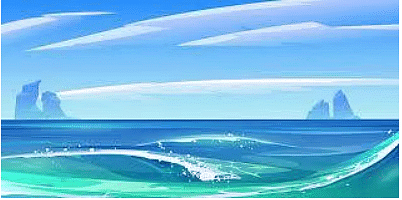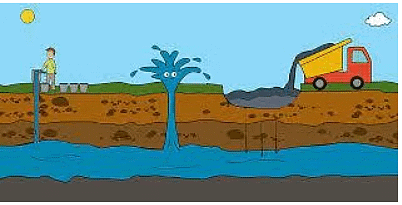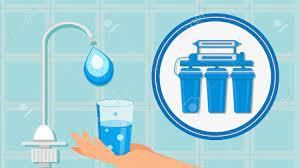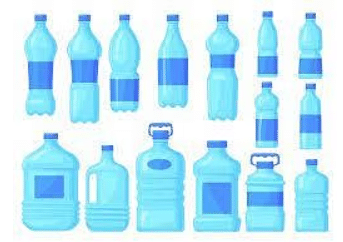Worksheet Solutions: Water O’ Water! | EVS for Class 3 PDF Download
Q1: Multiple Choice Questions (MCQs).
(i) What is a sea?
(a) A large area of still water
(b) A small body of water surrounded by land
(c) Part of the ocean partly surrounded by land
(d) An artificial waterway
Ans: (c)
A sea is a large body of saltwater that is partly surrounded by land. It is typically connected to an ocean but is partially enclosed by land. Seas are smaller than oceans and are often found between continents or within larger bodies of water.
(ii) What is groundwater?
(a) Water found in rivers
(b) Water in ponds
(c) Water found underground in soil and rock
(d) Water from canals
Ans: (c)
Groundwater is water that is found beneath the Earth's surface, typically in the spaces between soil particles and in porous rock formations. It accumulates as a result of rainfall or other sources of water infiltrating the ground. Groundwater is an essential source of freshwater for wells and springs.
(iii) How is a dam used?
(a) To store excess water
(b) To clean clothes
(c) To create artificial reservoirs
(d) To make canals
Ans: (a)
A dam is a barrier built across a river or stream to impound water. One of the primary purposes of a dam is to store excess water, which can be released gradually when needed for various purposes, such as irrigation, generating electricity, and providing a reliable water supply.
(iv) What is the purpose of a tube well?
(a) To store water bottles
(b) To clean utensils
(c) To create canals
(d) To access groundwater
Ans: (d)
A tube well is a type of water well that is typically a narrow, deep hole drilled into the ground to access groundwater. It allows people to obtain freshwater from underground aquifers, making it an essential source of clean water in many areas.
(v) Which form of water can be found in snow or glaciers?
(a) Liquid
(b) Solid
(c) Gas
(d) Vapor
Ans: (b)
Snow and glaciers are composed of solid ice crystals. In colder regions, water vapor in the atmosphere can freeze directly into ice crystals, forming snowflakes, or accumulate over time to create massive ice sheets known as glaciers. So, the form of water found in snow and glaciers is solid ice.
Q2: Fill in the Blanks.
(i) We use water for ________, making food, bathing, washing clothes, and many more daily.Ans: drinking
(ii) A ________ is a large area of water surrounded by land.
Ans: lake
(iii) Groundwater is the water found underground in the cracks and spaces in soil, sand, and ________.
Ans: rock
(iv) A well is an excavation or structure created in the ground to access ________ resources, usually water.
Ans: liquid
(v) Water from the river or ________ is used for drinking.
Ans: filtered water
Q3: Short Answer Questions.
(i) Why is water essential for our life on this planet?
Ans: Water is essential for our life on this planet because we use it for drinking, preparing food, bathing, washing clothes, and cleaning utensils. It is a crucial resource that helps us lead a comfortable life.
(ii) Name two natural sources of water other than rivers and seas.
Ans: Two natural sources of water other than rivers and seas are ponds and lakes.
(iii) What is the purpose of a dam?
Ans: The purpose of a dam is to stop or restrict surface water flow, creating an attached reservoir to store excess water. Dams are essential for managing water resources.
(iv) How does groundwater differ from water in rivers?
Ans: Groundwater is water found underground in soil and rock, while water in rivers is natural flowing water above the ground. Groundwater is stored beneath the surface, while river water flows on the surface.
(v) Why is it important to store water?
Ans: Storing water is essential to ensure a continuous supply of water for various purposes, even when there is limited availability due to natural factors or infrastructure issues. It helps us manage water resources efficiently.

|
45 videos|182 docs|48 tests
|
FAQs on Worksheet Solutions: Water O’ Water! - EVS for Class 3
| 1. What is the importance of water in our daily lives? |  |
| 2. How much water should I drink in a day? |  |
| 3. Can drinking more water help in weight loss? |  |
| 4. Is it safe to drink tap water? |  |
| 5. What are the benefits of staying hydrated? |  |
















